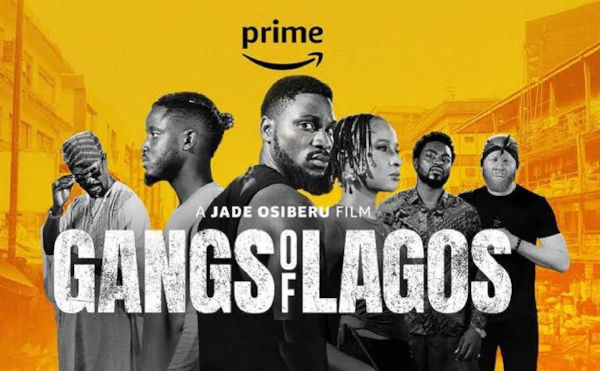There is nothing that suggests malice in the portrayal of the Eyo Masquerade in the film and unless there is some ulterior motive, the anger is very unnecessary.
In the last 12 hours, there have been three letters calling for the censorship of Jade Osiberu’s latest film, Gangs of Lagos. The film, set in Isale Eko, Lagos State, Nigeria follows three friends, Obalola (Tobi Bakre), Ify (Chike) and Gift (Adesua Etomi-Wellington) who join a gang after their adoptive father is killed.
Two scenes in the film feature the Eyo Masquerade, also known as Adamu Orisha, indigenous to the Isale Eko people. The white-clad Eyo masquerades are said to represent the spirits of the dead, and are referred to in Yoruba as “agogoro Eyo”. In summary, it is a revered part of the culture.
Two of the letters calling for the censorship of the film are from the Isale Eko Descendents Union and the Adamu Orisha Cult. The third is from the Lagos State Government which frowned at “the cultural misrepresentation in the film.”
For the Union and the Cult, the film portrayed the Eyo as criminals and gangsters, thus depicting the culture of the Isale Eko people in an insensitive manner. The Lagos State Commissioner for Tourism, Arts and Culture, Uzamat Akinbile-Yussuf echoed these thoughts and said that the Eyo Masquerade was portrayed “as a gun-wielding villain while adorning the full traditional regalia.
She said: “We are of the opinion that the production of the film ‘The Gang of Lagos’ is very unprofessional and misleading while its content is derogatory of our culture, with the intention to desecrate the revered heritage of the people of Lagos. It is an unjust profiling of a people and culture as being barbaric and nefarious. It depicts a gang of murderers rampaging across the State”.
Before we talk about the film and cultural symbolism, let’s talk about her disappointment with the depiction of a gang of murderers rampaging the state. Data supports the film’s writing in this regard. In 2022, Lagos state recorded 324 murder cases. We digress.
Back to the portrayal issue, since the film premiered on April 7, there hasn’t been any public discourse (except the latest engineering by these letters) linking the Eyo to criminal activities. The audience simply followed the story and drew societal parallels from the plot, especially in relation to the recent general elections.
It is understandable that the people of Isale Eko feel slighted that the film presents the underbelly of society on a large scale with its name at the forefront. However, the film does not undermine the Eyo Masquerade or at least tries not to.
The letters open the dialogue for a bigger issue, which is the education of the film audience across all levels of society. Oftentimes, we assume that there is a widespread understanding of literary devices but there clearly isn’t, especially in the quarters where it matters most — the government and traditional culture custodians.
The conversation at hand is that of symbolism and interpretation. What does the Eyo Masquerade represent in this film and why should anyone care? It is true that culture and emblems need to be presented in the best light as much as possible. It’s what we say we want to do when we tell African stories and if we can forgive the crusaders of the outrage, it is presumably their noble reason.
However, since the letters came out, I have found myself asking if we all saw the same film. So, I’ll explain the symbolism. The gangs pretended to be Eyo Masquerade because they knew and understood its sanctity. They knew that the people would be unsuspecting as the Adamu Orisha is associated with peace and is a noble part of the culture. They capitalised on the trust people had for the Masquerade and disguised with them.
The government and the indigenes should be able to interpret the intentions that show that the cultural symbol is too clean to be associated with gangs, too pure that no one suspected that the gangs were camouflaging with them. There should be a campaign that amplifies this message rather than antagonize the filmmakers.
Fights like this are dangerous when they come from the government. They add more hurdles to an already overburdened industry that contributes immensely to the Gross Domestic Product (GDP) of the country. They tell the filmmakers to look towards Westernized versions of stories out of fear that they will be too censored at home should they attempt to create their own interpretations of our cultural elements.
For an industry that has not received the weight of support it ought to from the government, the least it should get is more grief from the same quarters. This issue has further made the case for more dialogue and collaboration between the industry and the government, with the latter opening its arms and purses; and the former prioritizing
Source: Inside Nollywood


